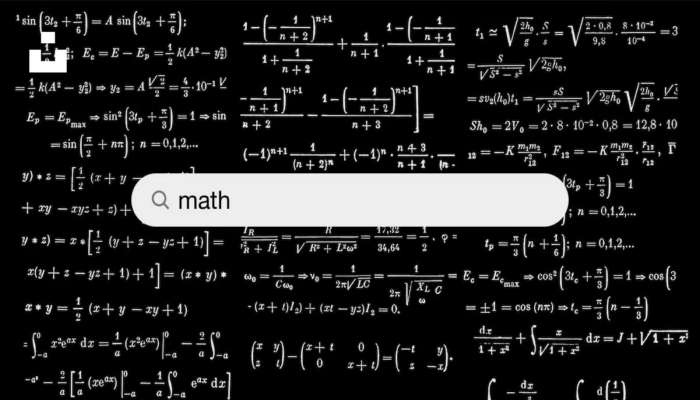
Differentiation Of Sin Inverse X: A Comprehensive Guide
Differentiation is a fundamental concept in calculus that allows us to analyze how a function changes as its input varies. By finding the derivative of a function, we can determine important properties such as rates of change, slopes of curves, and extrema. In this comprehensive guide, we will delve into the art of Differentiation Of Sin Inverse X, a specific type of inverse trigonometric function, and explore various techniques to master this skill.
Introduction to Differentiation Of Sin Inverse X
Inverse trigonometric functions are mathematical functions that can reverse the effects of their corresponding trigonometric functions. These functions are denoted by the prefix “arc” or “inverse,” such as arcsin, arccos, and arctan. Sin inverse x, or arcsin(x), is the inverse function of the sine function, and it returns the angle whose sine is equal to x.
Exploring the basics of sin inverse x
To understand how to differentiate sin inverse x, it is crucial to have a solid grasp of the basics. The domain of sin inverse x is -1 to 1, and its range is -π/2 to π/2. The graph of sin inverse x is a curve that is symmetrical about the line y = x. As x approaches 1 or -1, the value of sin inverse x approaches its maximum and minimum respectively.
Differentiating sin inverse x step by step
Now let’s dive into the step-by-step process of differentiating sin inverse x. To differentiate sin inverse x with respect to x, we can use the chain rule. The chain rule states that if y = f(g(x)), where f and g are functions, then the derivative of y with respect to x is given by dy/dx = f'(g(x)) * g'(x). Applying this rule to sin inverse x, we have:
dy/dx = (1/sqrt(1 – x^2)) * (d/dx)(x)
Simplifying further, we get:
dy/dx = 1/sqrt(1 – x^2)
Common mistakes to avoid when differentiating sin inverse x
While differentiating sin inverse x, there are a few common mistakes that one should be aware of and avoid. One of the most frequent errors is forgetting to apply the chain rule. Remember that sin inverse x is an inverse function, and to differentiate it, we need to use the chain rule. Another mistake is incorrectly differentiating the square root term. It’s important to remember the derivative of sqrt(u) is (1/2) * (du/dx) * (1/sqrt(u)). Lastly, make sure to simplify the expression as much as possible to avoid unnecessary complexities in the final derivative.
Applying differentiation of sin inverse x in real-life problems
The differentiation of sin inverse x has numerous applications in real-life problems. One common application is in physics, particularly in problems involving motion along a curve. By differentiating sin inverse x, we can determine the rate of change of an angle with respect to time, which can be crucial in understanding the dynamics of objects in motion. Additionally, the differentiation of sin inverse x is used in engineering, finance, and various scientific fields to analyze and solve complex problems.
Advanced techniques for differentiating sin inverse x
Once you have mastered the basic technique of differentiating sin inverse x, you can explore advanced techniques to further enhance your skills. One such technique is utilizing trigonometric identities to simplify the expression before differentiation. For example, you can use the identity sin^2(x) + cos^2(x) = 1 to rewrite the expression in a more manageable form. Additionally, you can use the quotient rule and product rule to differentiate more complicated functions involving sin inverse x.
Practice exercises for mastering the Differentiation Of Sin Inverse X
To truly master the art of differentiating sin inverse x, practice is essential. Here are a few exercises that will help solidify your understanding and sharpen your skills:
- Differentiate sin inverse (2x^2 + 3) with respect to x.
- Find the derivative of sin inverse (cos x) with respect to x.
- Determine the rate of change of sin inverse (2t + 1) with respect to t.
Solve these exercises step by step, applying the techniques we have discussed, and verify your solutions. With consistent practice, you will become more confident in differentiating sin inverse x.
Resources and tools for further learning
If you want to delve deeper into the topic of differentiating sin inverse x, there are several resources and tools available to aid your learning journey. Online calculus textbooks and video tutorials can provide comprehensive explanations and examples. Additionally, mathematical software such as Mathematica and Wolfram Alpha can assist in verifying your solutions and exploring more complex scenarios. Don’t hesitate to seek out these resources to enhance your understanding.
Conclusion
Mastering the art of differentiating sin inverse x may seem daunting at first, but with the right approach and practice, it becomes an achievable goal. By understanding the basics, avoiding common mistakes, and applying the chain rule, you can confidently differentiate sin inverse x. Remember to explore advanced techniques, practice regularly, and utilize available resources to enhance your skills. So go ahead, embrace the challenge, and embark on your journey to become a master of Differentiation Of Sin Inverse X.


